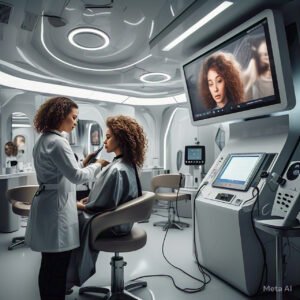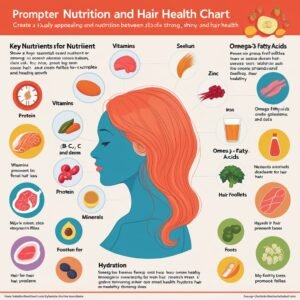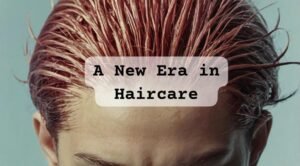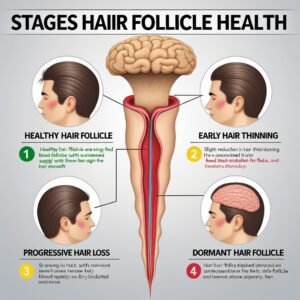Is AI-Based Virtual Hair Styling Reliable?
Artificial intelligence (AI) has made a huge impact over the last decade in all forms of industries, and the fashion and beauty sector are not exempted. The most interesting innovation of this field is arguably the creation of AI-powered virtual hair styling technology. The software provides the potential to try different hairstyles, cuts, and colors without visiting a salon. As with new technology generally, though, the question must be asked: Is virtual hair styling using AI trustworthy?
What is AI-Based Virtual Hair Styling?
AI-based virtual hair styling are websites or applications that utilize artificial intelligence to enable individuals to virtually try various hairstyles. Through facial recognition and computer vision, these sites examine an individual’s face structure, hair type, and style to recommend customized hairstyles or enable users to view how they would look with a new haircut or color.
These websites generally function by having the user upload a photo of themselves, which is then run through an algorithm that places different hairstyles on top of their picture. There are even applications that permit users to test out different hair colors, lengths, and styles, allowing them to try hundreds before they commit.

The Technology Behind Virtual Hair Styling
The basis of virtual hair styling is AI and machine learning, which collaborate to generate realistic simulations of hair change. The software applies numerous technologies to achieve this, including:
1.Face Recognition and Feature Mapping: AI recognizes the person’s facial characteristics, such as the face size, jaw line, and position of the major features (eyes, nose, and lips). All of these details are applied to customize the hairstyle so that it can easily settle into the user’s face shape.
2.Computer Vision: The technology enables the system to perceive the shape and volume of one’s hair and reproduce what the new hairstyle will be like by comparing the present hair type.
3.Augmented Reality (AR): There are also applications that are using AR to enable users to visualize the new hairstyle in real-time via phone or tablet camera. This gives a more engaging and immersive experience.
4.Deep Learning: The technology assists the AI in “learning” and improving its hairstyle predictions with time, providing more accurate and realistic results.
Is AI-Based Virtual Hair Styling Reliable?
Though the technology has come a long way, the reliability of AI-based virtual hair styling software relies on a few factors.
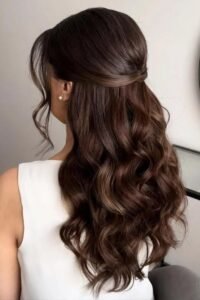
1.Accuracy of Results
The quality of AI hair styling is highly dependent on the quality of software and the stability of algorithms. There are certain sites that give highly realistic results, displaying nearly perfect visual representation of what various hairstyles would look like on a user. But all virtual hair styling programs are not created equal. Less expensive or less sophisticated programs might not correctly pair hairstyles with an individual’s face shape or hair type, resulting in unnatural-looking outcomes.
Specifically, lighting, camera position, and sharpness of the image can affect the performance of the tool in generating a realistic haircut. Without a clear image of the user or if it was captured at low light, the AI will not be able to generate an effective match, rendering the tool not so reliable.
2.Customization and Personalization
One of the key reasons for the popularity of virtual hair styling is its capacity to personalize tips based on an individual’s characteristics. The greater amount of information the tool can draw upon (e.g., hair texture, skin tone, and facial structure), the more customized it can make its tips. Still, some websites only provide straightforward means of personalization without any consideration for the nuances of differences in hair textures, colors, or tastes.
Also, AI can only suggest styles that typically fit a user’s facial shape but not necessarily the nuances that an expert stylist might. For example, a particular haircut may look tremendous in a simulated scenario but fail to flatter the person in actuality due to hair texture, density, or flow nuances.

3.Virtual vs. Reality
Another critical factor is how virtual simulations differ from actual outcomes. Even if a computer tells you what a certain hairstyle will look like on you, the end result may turn out differently than intended. Hair does not act as it will in real life when on a computer simulation. Such things as how hair reacts to humidity, movement, or even the cut in which the stylist will use can have a great impact on the final appearance.
Also, AI applications just can’t match sitting down with an expert stylist. An experienced stylist will be able to offer you suggestions based on your hair type, lifestyle, and face shape that AI currently can’t yet replicate—at least not yet.
4.User Experience and Interface
Most AI hair styling apps are user-friendly, yet the experience is very diverse. Well-designed platforms offer smooth, natural interfaces, where users can simply upload photos, experiment with various styles, and adjust them. But others can be tedious to work with, involving a series of steps or limited options

5.Limitations in Hairstyle Range
Most AI-powered tools boast a huge library of styles to choose from, but the choices are still limited. If you desire a very specific hairstyle or an unusual color, you may be disappointed with the choices. Similarly, extremely intricate or unusual styles may not be adequately represented in virtual tools.
The Advantages and Disadvantages of AI-Based Virtual Hair Styling
Advantages:
Low-cost: Computer-based products tend to be free or low-cost, a risk-free method for trying new looks prior to visiting a salon for an investment.
Convenience: Individuals can test a few on their own without an appointment or salon visit.
Visualizing Potential Changes: Computer styling doesn’t risk making a new haircut or color due to the visualization aspect.
-Time-saving: Rather than devoting hours to the salon, virtual hair styling enables users to experiment with different styles within minutes.
Drawbacks:
Unrealistic Outcomes: Outcomes from the app are not always the same as they would be in reality, especially when taking into account things such as hair texture and lighting.
No Professional Finish: AI cannot duplicate the personal advice or professional expertise a stylist provides.
Limited Style Options: Some platforms may not offer the full range of hairstyles you’re interested in.
Potential Over-reliance: Relying too heavily on virtual tools might discourage individuals from seeking professional opinions, leading to less optimal results.
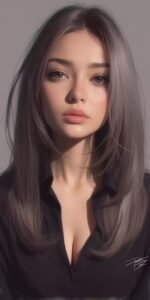
Conclusion:-
AI-powered virtual styling of hair is promising for use by individuals wishing to try on new styles, but its trustworthiness is still a gamble. While high-end software is able to generate realistic and individualized recommendations, the outcome depends on the quality of the images, range of styles, and inability to correctly mimic the natural movement of actual hair.
Finally, AI hardware can be a good basis for fantasizing about future hairstyles, but to get the exact and professional vision, a visit to a great stylist is still the best option. Times may pass when the virtual styling of tresses will be even more developed and precise, but up to now AI is a helpful but not flawless beauty tool.
